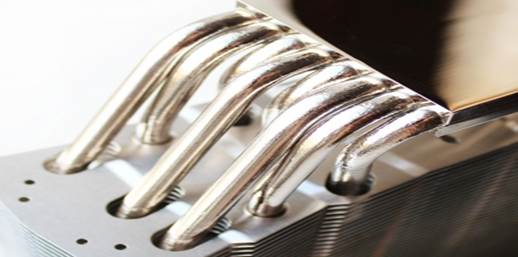In an effort to
innovate the legendary Archon cooler even more, Thermalright has launched a
number of small modifications to their cooler, provided a new fan and slightly
changed the retention mechanism. Let's check out how good that innovation is.
In recent years, Thermalright had released
Archon cooler, which surprised us by its extremely high performance and low
noise level. At the end of 2010, CPU LGA2011 did not appear, so Archon did not
officially support Intel's Core i7-3960X Extreme Edition and similar CPUs, even
though you can buy an additional set of fasteners and mount the cooling device
into LGA2011 motherboards.
Building on the success of the initial
Archon sample, the company had released their first Archon SB-E model, so we
had a chance to test it in early spring. And, Thermalright released the final
version of Archon SB-E with improved heatsink and new fans. Furthermore, SB-E
has different types of fastener compared to the original version of Archon. And
recently, Archon SB-E X2 was introduced, featuring a second fan which was very
useful. We hope to get this model in hand soon, but today we will focus on the
Archon SB-E and compare it with the legendary Archon as well as with the most available
efficient air cooler.
Packaging and accessories
The traditional Thermalright's product
packaging is a cardboard box filled with smooth rubber foam frame.

Product
box
The cooler and fans are fixed in box
compartments. The accessories are packed in a smaller box. Similar to many
other Thermalright products, Archon SB-E comes with a universal back-plate, a
key, nuts and spacers, documentation, fan fasteners, Thermalright ChillFactor
III thermal grease, and a sticker with company logo.

Accessories
and associated equipment
The cooler is manufactured in China. It
suggested a price of $79.25, which was the same as the price of the original
Archon. The warranty period is 2 years.
Design and functionality

Design
description
The weight is lower compared to the
original Archon: 760 instead of 806 grams. It is lighter because its heatsink
is less dense, only 44 instead of 50 aluminum heatsink fins.

Heatsink
And because each heatsink fin thickness was
0.5 mm, which mean 2.3 mm gap is wider compared to the Archon's, 2.0 mm. And
since the number of heatsink fins is reduced, the overall surface area of the
heatsink is about 8000 instead of 9000 cm2. In our opinion this is
not an innovation.
As the layout of the pipes on the heatsink
body, they do not go in two straight rows as in the Archon but form two
rectangles out of unevenly spaced dots.

Position
the heatsink pipes
Thermalright engineers seem not to pursue
any goal with that arrangement, so there must be due to the number and shape of
the tube as they go out of the base and get into the heatsink Take a look at
the rectangle texture below:

The
design of heatpipes
No doubt, the bottom heatsink fins have no
contact with five out of the eight heat pipes and hold on to three pipes only,
This does not cause a negative impact to the overall performance of the Archon
SB-E.
The details of the heat sink are soldered
together. The heatsink base is polished like a mirror:

The
heatsink base
However, our sample of Archon SB-E product
looks like to have a curved base:

Heatsink
size
The left part of the base is lower along
the longitudinal axis and there’s a bulge along the entire transverse axis. It
is no wonder that the thermal grease imprints are not uniform irrespective of
the orientation of the cooler on the CPU:

Thermal
paste
It is easy to recognize where the pressure
is high and low, although the CPU heatsink contact with the entire surface of
the cooler base, without any gaps at all.
We tested the Thermalright TY-150 fan that
Archon SB-E is equipped with in a recent review and very satisfied with its
performance.

Fan
of the device
According to its specs, TY-150 is
controlled by PWM with a speed range from 500 to 1,100 RPM and a noise level of
19 to 23 dBA, creating an air flow of 38 CFM to 84. The fan consumes about 2.4
watts of power.
The lifecycle of Enhanced Hyper-Flow
bearing is not expressed in its technical standards. The fan was fastened to
the heatsink with two wire brackets using the inner openings in the fan’s
frame.

Fan's
frame
The associated silicon pads are attached to
the fan to absorb vibrations. Below is a picture of the Thermalright Archon
SB-E and its fans when complete installation:

Pictures
of the complete installation